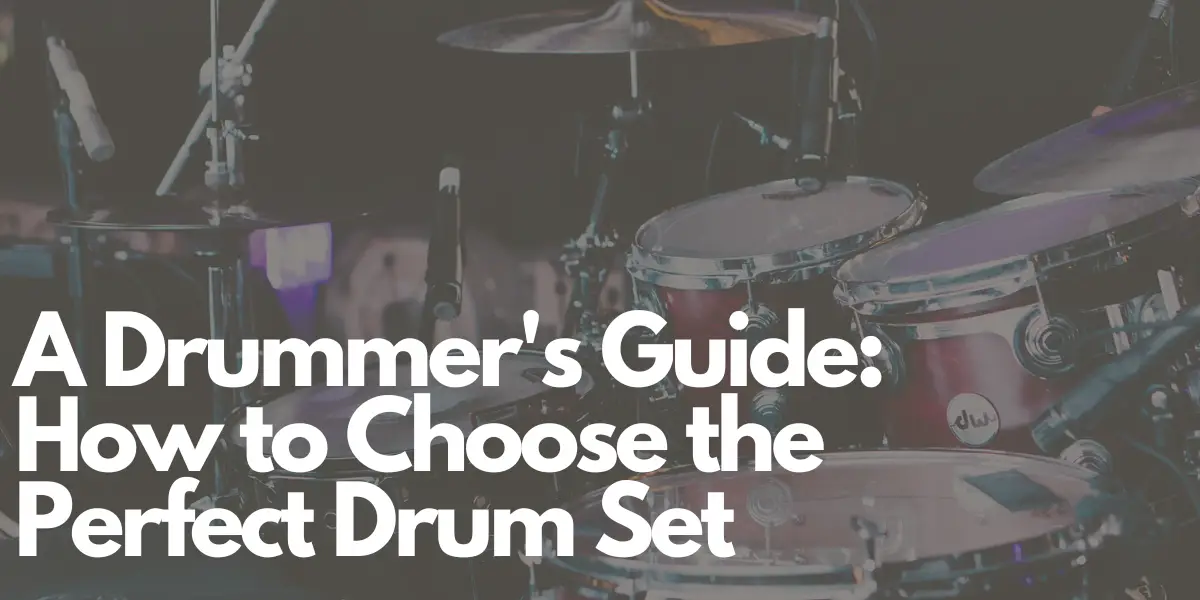Choosing a drum set is a significant step in your musical journey. Whether you’re just starting or looking to upgrade, finding the right drum kit that suits your needs, budget, and musical preferences is crucial. In this guide, we’ll walk you through the process of choosing the perfect drum set step by step.
1. Define Your Budget:
The first step in choosing a drum set is to determine your budget. Drum kits come in a wide range of prices, so setting a budget will help you narrow down your options. It’s essential to strike a balance between quality and affordability to ensure you get the best value for your money.
2. Consider Your Skill Level:
Your experience level as a drummer plays a significant role in your choice of drum set. If you’re a beginner, it’s wise to start with a more affordable starter kit. Intermediate and advanced drummers, on the other hand, may seek higher-quality sets with more features and customization options.
3. Decide on Acoustic or Electronic:
One of the critical decisions to make is whether you want an acoustic drum kit or an electronic drum kit. Acoustic drums produce traditional drum sounds, providing a rich and authentic experience. Electronic kits offer versatility and sound customization, making them suitable for various musical genres.
4. Think About Drum Sizes:
Drum sizes greatly affect the overall sound and tone of your kit. Smaller drums produce sharper, higher-pitched sounds, while larger drums create deeper, lower-pitched tones. Consider the type of music you want to play and choose drum sizes accordingly.
5. Choose the Number of Drums:
Drum sets can vary in the number of drums they include. Standard configurations usually consist of a bass drum, snare drum, and a combination of tom-toms. The number and size of toms can differ, so choose a setup that matches your playing style.
6. Explore Drum Shell Materials:
Drum shells are typically made of wood, with various types like maple, birch, and mahogany. The choice of shell material affects the drum’s sound. Research and listen to different materials to find the one that resonates with your musical preferences.
7. Check for Drum Hardware Quality:
Pay close attention to the quality of the hardware, including drum hoops, lugs, and stands. Well-made hardware ensures the durability and stability of the kit. Quality hardware will save you headaches in the long run.
8. Test the Sound:
Whenever possible, play the drum set or listen to someone else play it to assess the sound quality. The sound of the drums should match your musical style and preferences. A good sound is essential for an enjoyable playing experience.
9. Consider Additional Accessories:
Think about any additional accessories you might need, such as cymbals, drum thrones, drumsticks, and a bass drum pedal. These accessories can add to the overall cost, so factor them into your budget.
10. Research Brands and Models:
Research different drum brands and specific models to find those known for their quality, durability, and sound. Reading reviews, asking for recommendations, and visiting music stores to try out different kits can be invaluable in your decision-making process.
11. Assess Portability:
If you plan to transport your drum set for gigs or rehearsals, consider the portability of the kit. Compact, easily assembled kits or electronic drum sets can be more convenient for frequent travel.
12. Plan for the Future:
Think long-term when choosing your drum set. Consider whether you’ll need to expand your kit or replace components in the future. Some drum sets offer room for upgrades and customization, saving you money down the road.
13. Compare Prices and Features:
Make a list of the drum sets that meet your criteria and compare their prices, features, and included accessories. This detailed comparison will help you make an informed decision based on your budget and preferences.
14. Seek Advice:
Don’t hesitate to seek advice from experienced drummers, teachers, or music store professionals. Their insights and recommendations can provide valuable guidance in choosing the perfect drum set.
In conclusion, choosing a drum set is a personal decision that should align with your musical goals and preferences. Take your time, do your research, and test different kits to find the one that feels and sounds right for you. Remember that the right drum set can inspire you and enhance your drumming experience. So, go ahead, make an informed choice, and let the beat begin!
Author: Mike P
Hi! My name is Mike! I’ve been an apartment producer/musician for 10+ years. I’ve played in punk bands, released EDM tunes on Beatport and iTunes, and have a semi-successful stock music portfolio. Read more…



